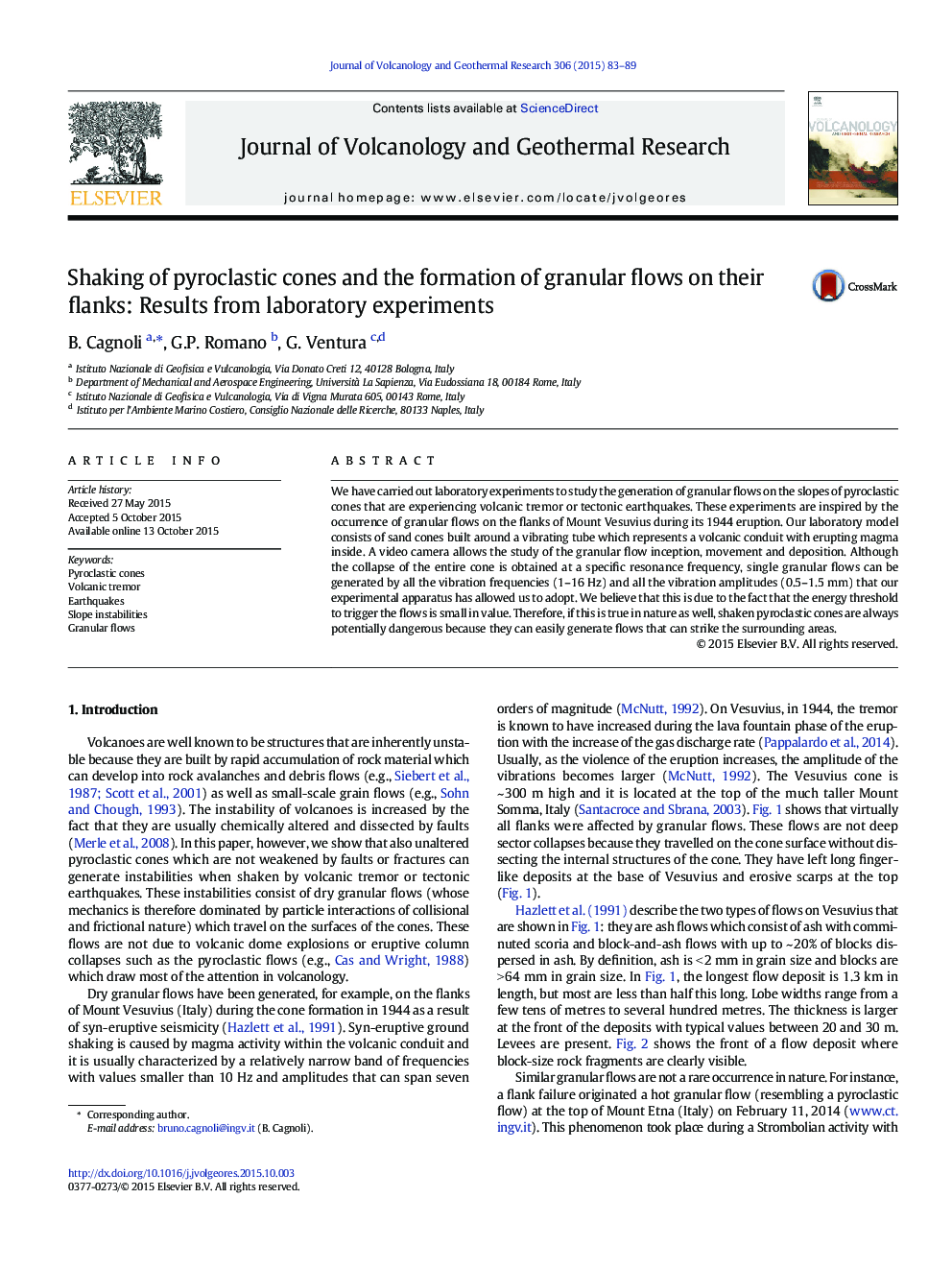| Article ID | Journal | Published Year | Pages | File Type |
|---|---|---|---|---|
| 4714379 | Journal of Volcanology and Geothermal Research | 2015 | 7 Pages |
•We study the occurrence of granular flows on the flanks of shaken pyroclastic cones.•Our laboratory experiments are inspired by the flows generated on Vesuvius in 1944.•We use shaken sand cones to model the effect of volcanic tremor on pyroclastic cones.•Pyroclastic cones in nature are always potentially unstable when shaken.
We have carried out laboratory experiments to study the generation of granular flows on the slopes of pyroclastic cones that are experiencing volcanic tremor or tectonic earthquakes. These experiments are inspired by the occurrence of granular flows on the flanks of Mount Vesuvius during its 1944 eruption. Our laboratory model consists of sand cones built around a vibrating tube which represents a volcanic conduit with erupting magma inside. A video camera allows the study of the granular flow inception, movement and deposition. Although the collapse of the entire cone is obtained at a specific resonance frequency, single granular flows can be generated by all the vibration frequencies (1–16 Hz) and all the vibration amplitudes (0.5–1.5 mm) that our experimental apparatus has allowed us to adopt. We believe that this is due to the fact that the energy threshold to trigger the flows is small in value. Therefore, if this is true in nature as well, shaken pyroclastic cones are always potentially dangerous because they can easily generate flows that can strike the surrounding areas.
